How Mobile Command Centers Improve Coordination During Natural Disasters
When natural disasters strike, chaos and disruption follow. Traditional communication networks collapse, mobility becomes restricted, and...
10 min read
Craftsmen Industries Oct 30, 2025 7:53:19 AM
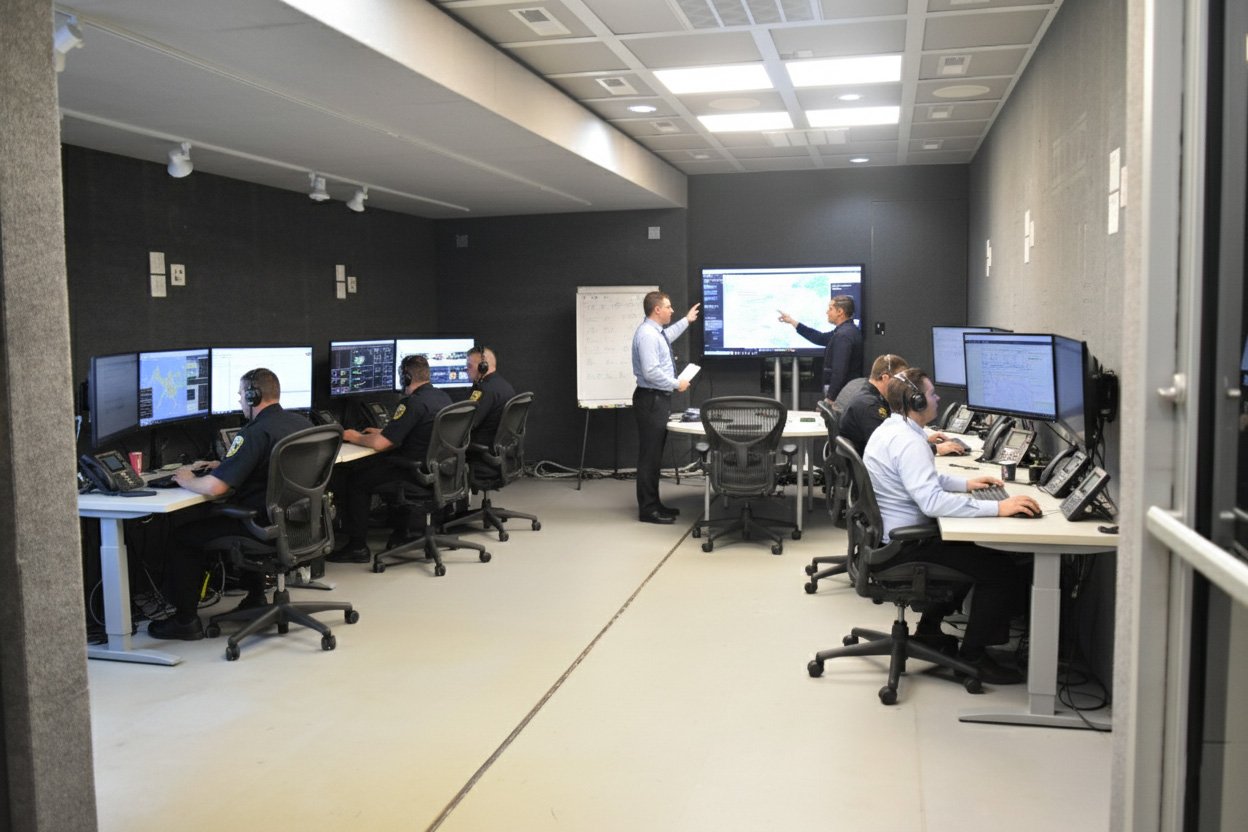
When a mobile command center doubles as an office, productivity hinges on intelligent design. These units are more than vehicles with desks; they are engineered work environments where teams must coordinate, analyze, and respond without delay. By focusing on layout, ergonomics, and integrated technology, a mobile command center can provide the same level of efficiency as a fixed office, while giving your team the flexibility to operate wherever the mission takes them.
A recent U.S. Bureau of Labor Statistics analysis found that increasing the share of remote work has a positive impact on productivity (a 1% rise in remote workers was associated with about a 0.08% boost in total factor productivity), underscoring that a well-designed mobile workspace can keep pace with a traditional office.
Read on to discover how smart design choices can turn a mobile command center into an efficient, high-performing office on wheels.
The modern workforce has evolved far beyond the walls of traditional office buildings. With globalization, digital transformation, and an increasing emphasis on remote operations, organizations are reevaluating how and where work is done. Mobile Command Centers, serving as Offices, have emerged as a strategic solution to these challenges, offering flexibility, resilience, and readiness in environments where fixed facilities are impractical.
The rise of remote and hybrid work models has underscored the importance of portable, high-functioning work environments. But beyond day-to-day business, mobile command centers shine during emergency response scenarios.
When natural disasters, such as hurricanes, floods, or wildfires, strike, traditional office infrastructure may become inaccessible or damaged. A mobile command office can be rapidly deployed to the field, acting as a mission-critical hub for coordination, communication, and resource management. This ensures response teams remain connected, capable of making real-time decisions, and able to streamline logistics in areas where support is urgently needed.
For example, the United States experienced a record 28 weather and climate disasters in 2023, causing at least $92.9 billion in damage. In such situations, having a mobile command center that can quickly move into the affected area and provide on-site leadership is invaluable for disaster response efforts.
Government agencies, military organizations, and first responders have long relied on mobile command units to ensure continuity of operations in the field. These workspaces serve as nerve centers for law enforcement, defense, and public safety, allowing personnel to manage missions, monitor real-time intelligence, and coordinate multi-agency responses.
The U.S. Department of Homeland Security classifies mobile communication centers as essential vehicles for responders, used during both emergency operations and planned events.
Law enforcement agencies frequently deploy mobile command offices for crowd control, large-scale event monitoring, and tactical operations. For example, one police department’s new $1.1 million mobile command vehicle in California is designed to provide a center for operational response during natural disasters, standoff situations, major protests, and other critical incidents
Military forces utilise mobile command centers as secure hubs for field command and communications. A recent defense analysis highlights that a modular, tech-infused mobile command post, leveraging AI-enabled radios and sensors, can significantly accelerate decision-making and operational tempo in the field, underscoring the value of these units for military and defense missions.
Meanwhile, first responders rely on mobile command units during emergencies when rapid access to command-and-control infrastructure is crucial. The versatility of these units makes them invaluable across industries where adaptability, efficiency, and reliability are non-negotiable.
Mobile workspaces are essential because they allow organizations to maintain productivity when traditional offices are unavailable. They support remote work, emergency response, and on-site operations in challenging environments. They have become a critical tool in today's workforce by offering flexibility and continuity. Research from the U.S. Bureau of Labor Statistics indicates that, from 2019 to 2022, industries experiencing a significant increase in remote work also positively impacted productivity growth.
Designing a mobile command center to function as an effective office requires more than just fitting desks and chairs into a vehicle. Every square inch must be planned with efficiency, comfort, and functionality in mind. The most successful mobile workspaces seamlessly combine ergonomics, innovative layouts, and environmental control to keep teams performing at their best.
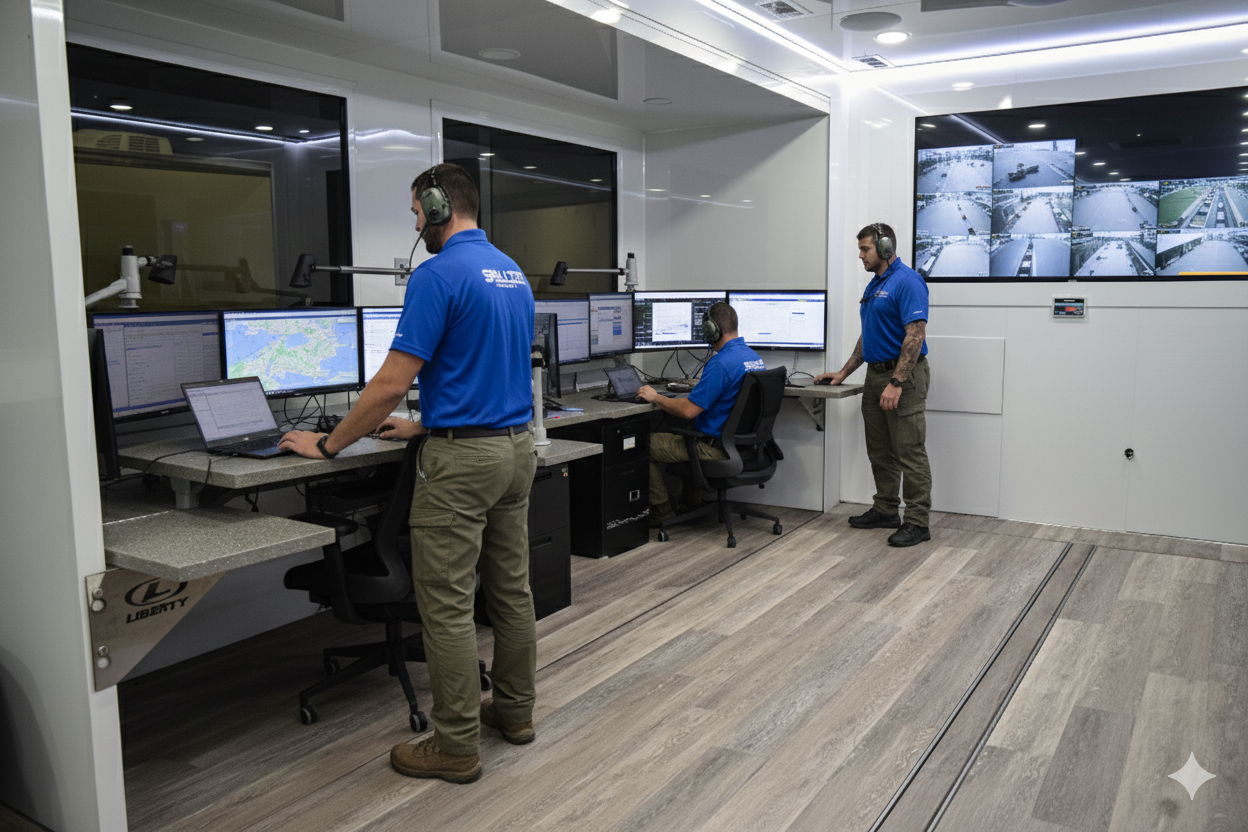
A productive command center begins with an ergonomic design. Adjustable seating, height-optimized work surfaces, and strategically placed monitors help reduce fatigue during extended periods of use. Careful attention to layout ensures smooth movement within the space while still enabling effective teamwork.
Since mobile offices have limited room, maximizing space is essential. Modular desks, collapsible tables, and hidden storage solutions allow the workspace to adapt to multiple tasks. This flexibility ensures the unit can serve as both a command hub and a collaborative office.
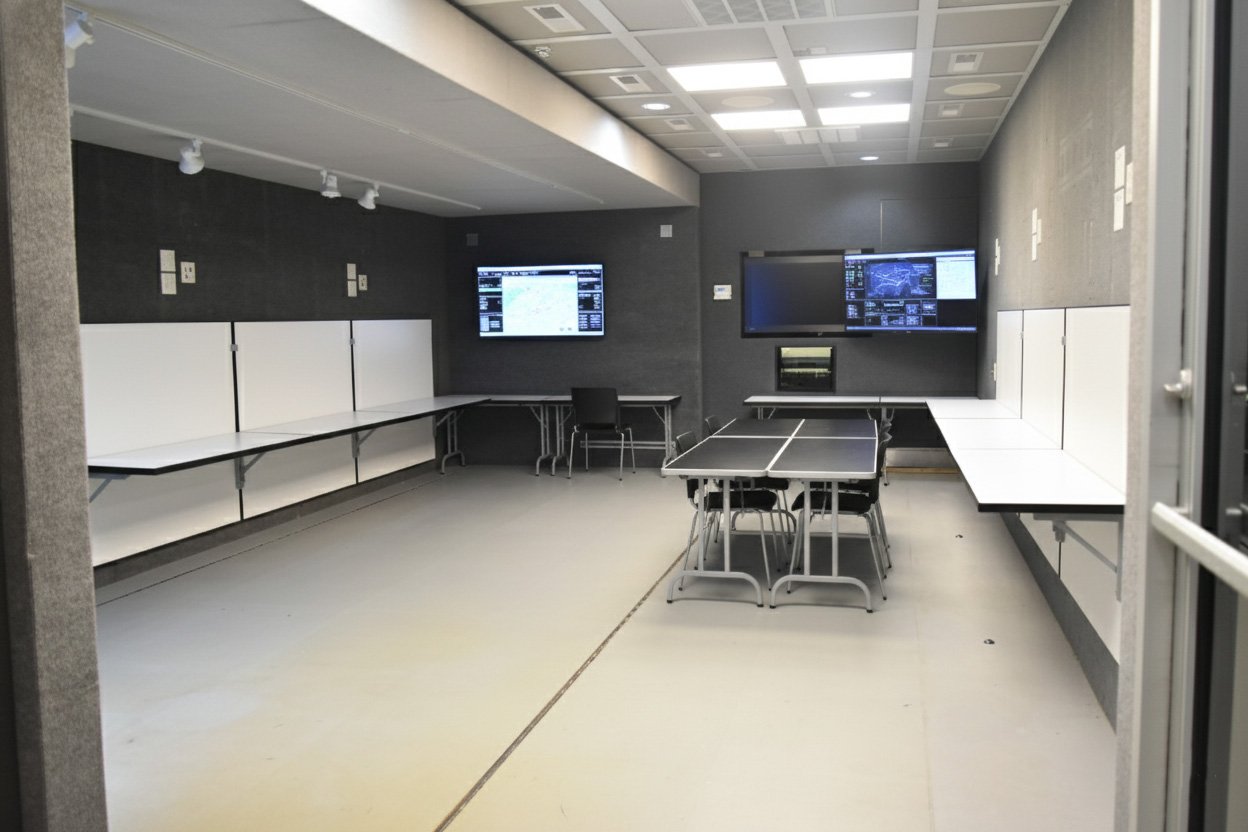
In high-stakes operations, focus and confidentiality are vital. Soundproofing and partitioned areas help reduce distractions while enabling sensitive conversations to remain private. Excessive noise isn't just an annoyance; it can severely impair productivity.
According to a report by the World Green Building Council, background noise in offices can result in a 66% drop in productivity.
Mobile command centers address this issue by utilizing insulated walls, acoustic paneling, or white-noise generators to reduce sound. Partitioned work areas or small breakout rooms allow teams to hold briefings or confidential discussions without disturbing others. These design choices allow simultaneous operations without interference.
A mobile command office is most productive when it includes ergonomic layouts that reduce fatigue. Innovative space-saving solutions allow the office to adapt to different missions. Noise control features ensure focus and privacy for critical operations.
No matter how well-designed a workspace is, it cannot function as a true office without advanced technology. Mobile command centers must be equipped with reliable communication systems, secure data access, and seamless connectivity to support decision-making in the field. The right tools ensure that operations inside these units match, or even exceed, the efficiency of traditional offices.
In emergency management, connectivity and information flow are literally life-saving – after-action reports from major incidents frequently identify communication breakdowns as a key point of failure.
For example, during the 2018 Merrimack Valley gas disaster, an official report noted that communication failures "made it almost impossible for emergency crews to talk to each other". This kind of scenario highlights why robust tech integration (radios, satellite links, networking equipment, etc.) is absolutely critical in a mobile command office. Below, we discuss the key technological integrations for productivity.
Reliable internet access is the backbone of a mobile office. Solutions such as 5G, satellite internet, and portable Wi-Fi networks guarantee connectivity even in remote locations. This allows teams to access cloud-based systems, communicate globally, and maintain continuous workflow.
Modern command centers rely on multi-screen dashboards, secure radios, and video conferencing tools to provide real-time information and support. These technologies allow teams to monitor situations as they unfold, coordinate effectively, and make informed decisions quickly.
Since mobile units often handle sensitive information, strong cybersecurity measures are essential. Firewalls, VPNs, and encrypted networks protect data from cyber threats. By integrating robust security protocols, these offices ensure safe and uninterrupted operations.
Technology ensures mobile offices remain connected and efficient in any environment. It allows teams to share data, communicate securely, and access resources instantly. Without it, productivity and decision-making would be severely limited.
While technology and efficiency are crucial, a mobile command office must also prioritize the comfort and well-being of its occupants. Teams often work long shifts in these environments, and a poorly designed space can quickly lead to fatigue, stress, and reduced productivity.
These offices support physical and mental health by focusing on climate control, lighting, and ergonomic features.
Temperature regulation is critical in confined mobile spaces. Advanced HVAC systems equipped with high-quality filtration maintain clean air and comfortable conditions, even in the most extreme climates. This ensures staff remain alert and focused during extended missions.
A comfortable team is an effective team; numerous studies have shown that workplace environment factors, such as temperature, have a direct impact on performance.
For example, research on office environments reveals that worker performance is highest around 22°C (72°F) and begins to decline as temperatures exceed the comfort zone; at 30°C, productivity can drop by nearly 9% compared to the peak. Similarly, proper lighting reduces eye strain and improves concentration.
Proper lighting significantly affects concentration and energy levels. LED lighting that mimics natural daylight helps reduce eye strain and fatigue. Adjustable lighting options, such as dimmable overhead lights or directed desk lamps, allow for task-specific illumination so that each team member can set their preferred brightness.
Research indicates that adequate illumination is associated with improved performance and well-being. One study found that providing approximately 1000 lux of light (roughly equivalent to a brightly lit office) along with optimal temperature significantly improved the productivity and health of office workers. In a mobile command unit, lights may also have color settings (such as cool white vs. warm) to align with circadian rhythms during night shifts.
Additionally, red light or low-blue light settings might be used during nighttime operations to preserve night vision. By thoughtfully designing the lighting, mobile offices create a workspace that minimizes headaches and eye fatigue, keeping personnel effective over long hours.
Comfortable seating and ergonomic furniture prevent discomfort during long operational hours. Many mobile command offices also include small rest zones or break areas, recognizing that personnel may need to step away and recharge. This could be as simple as a bench seat at the rear of the vehicle or a compact fold-down cot in a separate compartment. Taking breaks is proven to improve overall productivity and mental well-being.
According to a meta-analysis of work break studies, even short micro-breaks (under 10 minutes) can significantly boost performance and reduce fatigue.
Therefore, providing a space for team members to grab a quick rest or snack pays dividends in maintaining high productivity across a 12-hour shift, for example.
Some larger mobile command trailers even feature a kitchenette or coffee station, as well as a restroom facility, which significantly enhances comfort during prolonged deployments. These details, ergonomic chairs, multi-use furniture, and designated rest areas – help maintain productivity and morale throughout demanding schedules.
Comfort directly impacts focus and performance in mobile offices. Reasonable climate control, lighting, and ergonomic seating reduce stress and fatigue. When staff feel comfortable, they can work more efficiently and effectively.
Mobile command centers often operate in remote areas or during extended missions, where reliable power is essential. Designing them with energy efficiency in mind not only lowers costs but also ensures long-term operational sustainability. These units can function effectively with minimal environmental impact by integrating renewable energy and intelligent systems.
Solar panels and hybrid power systems are increasingly being incorporated into mobile offices. These solutions reduce dependency on fuel while providing a steady energy source. Renewable options also make units more environmentally responsible.
Heating, ventilation, and cooling can quickly drain power if not designed efficiently. Insulated walls, energy-efficient HVAC systems, and intelligent climate controls maintain a comfortable environment while conserving energy. This extends operational time and reduces the need for frequent refueling.
The benefits of sound insulation and HVAC efficiency are significant: According to the U.S. Department of Energy, proper insulation can save around 20% on average on heating and cooling costs.
In the context of a mobile command post, that translates to longer runtime on battery or generator fuel. Additionally, many command vehicles incorporate LED lighting and Energy Star-rated electronics to reduce the electrical load. Some even have climate zones, allowing unused sections of the trailer to be set at a different temperature (or turned off) to prevent energy waste.
By maintaining a tight thermal envelope and using energy-efficient climate control, a mobile office can operate longer in the field without needing resupply, and it also reduces its environmental impact.
Energy efficiency ensures mobile offices can run longer without constant refueling. It reduces both operational costs and environmental impact simultaneously. Sustainable power solutions also make units more reliable in remote or critical missions.
One of the most substantial advantages of mobile command offices is their ability to be custom-built for specific industries and missions. Each sector has unique demands, and a one-size-fits-all approach is ineffective. By tailoring layouts, equipment, and features, these units become highly specialized tools that maximize efficiency and effectiveness.
Yes, mobile command offices are built to meet industry-specific needs. Law enforcement, military, and corporate sectors each require different layouts and tools. Customization ensures every unit is tailored for maximum efficiency in its field.
Designing a mobile command office requires a careful balance between functionality, comfort, and adaptability. The goal is to create a space that not only supports productivity today but can also evolve to meet future demands. Following best practices ensures that these units perform reliably across a wide range of missions.
Mobile command offices should be designed with scalability in mind. Modular layouts and expandable sections enable growth and reconfiguration as mission needs evolve. This ensures long-term usability and value.
Safety must always be a top priority in the design process. Units should meet or exceed industry standards for electrical systems, fire safety, and structural durability. Compliance not only protects staff but also guarantees operational reliability in high-stress situations.
The most critical factors are flexibility, safety, and scalability. A well-designed unit can adapt to different missions while meeting compliance standards. These practices ensure productivity and long-term performance.
Mobile command centers are evolving rapidly, driven by advancements in technology, sustainability, and modular design. These innovations are making mobile offices smarter, greener, and more adaptable than ever before. Organizations that embrace these trends will be better prepared for the future of work and field operations.
Future mobile offices will feature AI-powered systems for more intelligent decision-making. Modular, expandable layouts will make them more versatile. Green technologies will ensure they operate efficiently and sustainably.
At Craftsmen Industries, we understand that productivity doesn't wait for the perfect setting; it needs to adapt to you. That's why our Mobile Command Centers, serving as Offices, are built to keep organizations working at their best, anywhere. With thoughtful layouts, advanced technology, and sustainable design, our units deliver the flexibility and efficiency today's workforce demands.
When performance matters most, trust Craftsmen Industries to engineer a mobile command center that keeps your team mission-ready. Contact us today to start your project.
The deployment time of a mobile command office depends on its design and level of customization. Many units are built with modular layouts and integrated systems, allowing them to be operational within hours. However, larger or more specialized builds may require additional setup to connect power, communications, and mission-specific equipment. Craftsmen Industries designs mobile command centers with rapid deployment in mind, ensuring agencies can begin operations as quickly as possible once on location.
Yes, many units are designed for off-grid use with generators, solar panels, and water storage. This independence makes them ideal for remote or disaster-stricken areas. They can operate independently of local infrastructure.
Security features can include reinforced doors, surveillance systems, and controlled access points. Some also use encrypted communication for sensitive missions. These measures protect both staff and critical data.
Yes, larger units often require drivers with commercial licenses. Operators are typically trained to manage onboard systems and equipment. This ensures safety and smooth operation in the field.
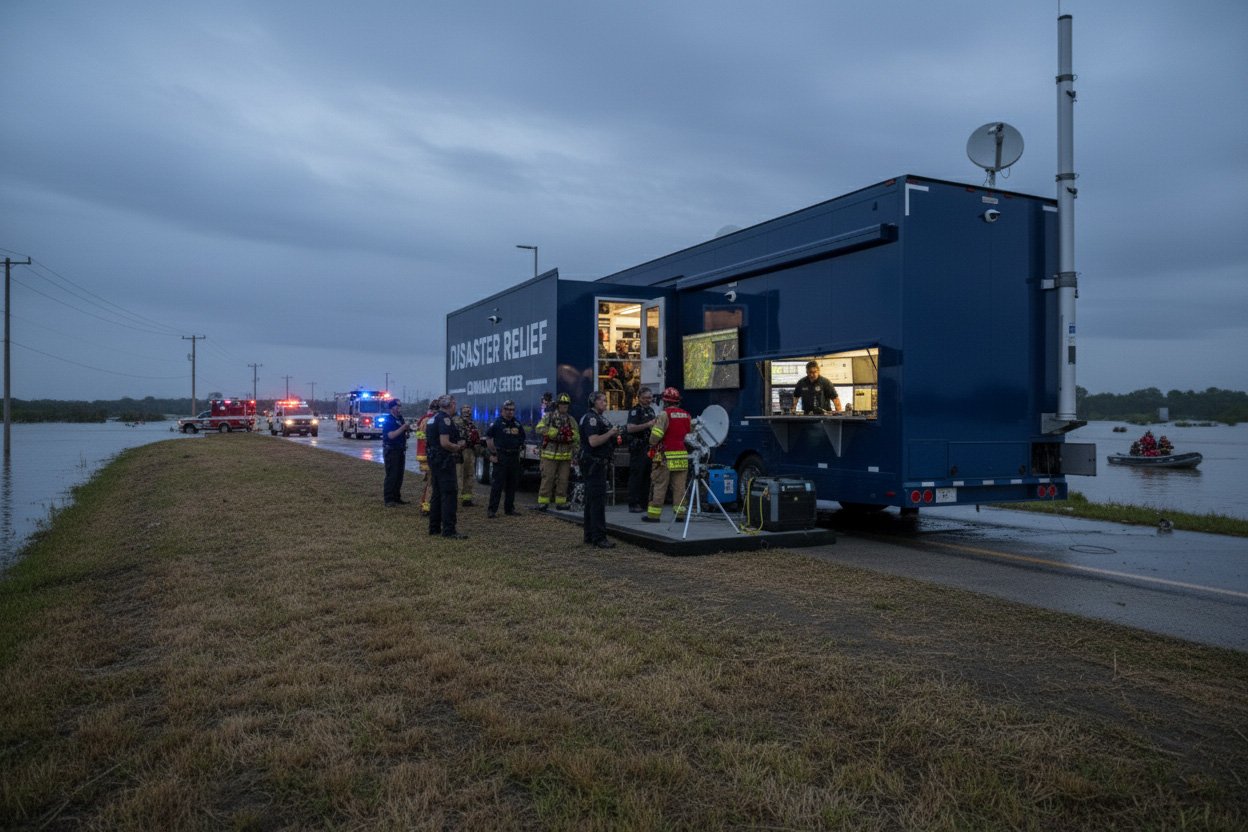
When natural disasters strike, chaos and disruption follow. Traditional communication networks collapse, mobility becomes restricted, and...
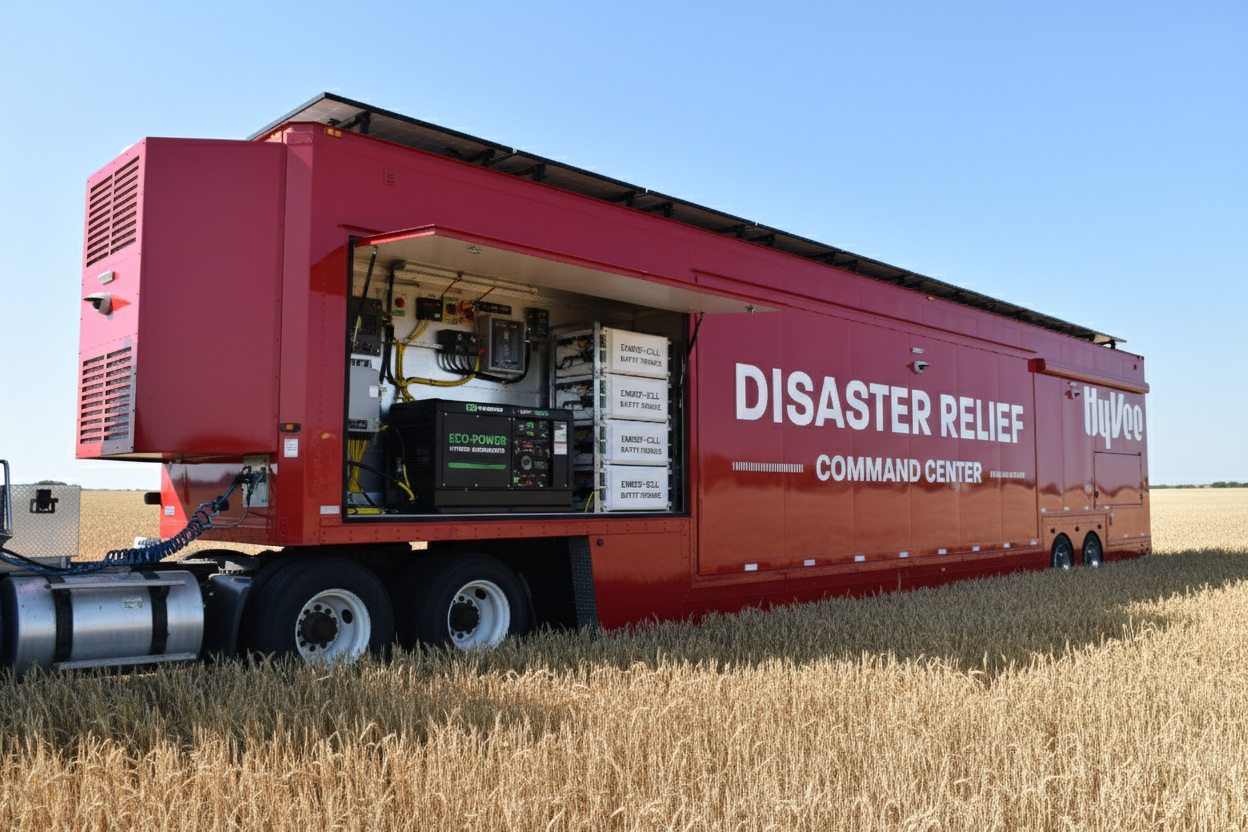
In an era where rapid-response capabilities are increasingly vital, the investment in a mobile command center (MCC) has become more than just a...
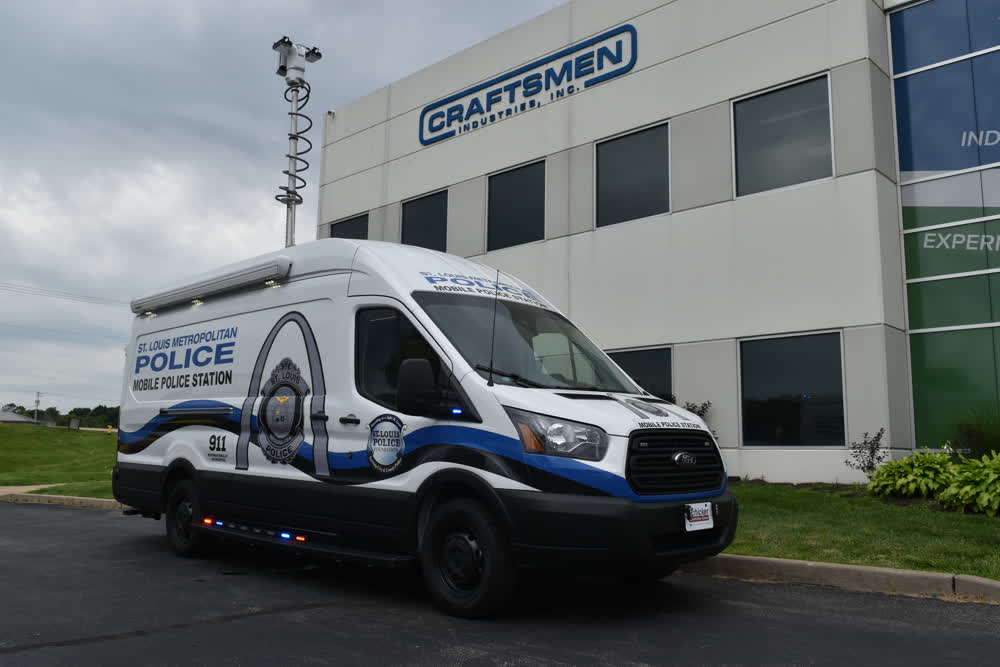
MCCs have a variety of use cases that help different agencies in many ways. They are vehicles that primarily help with managing and coordinating...